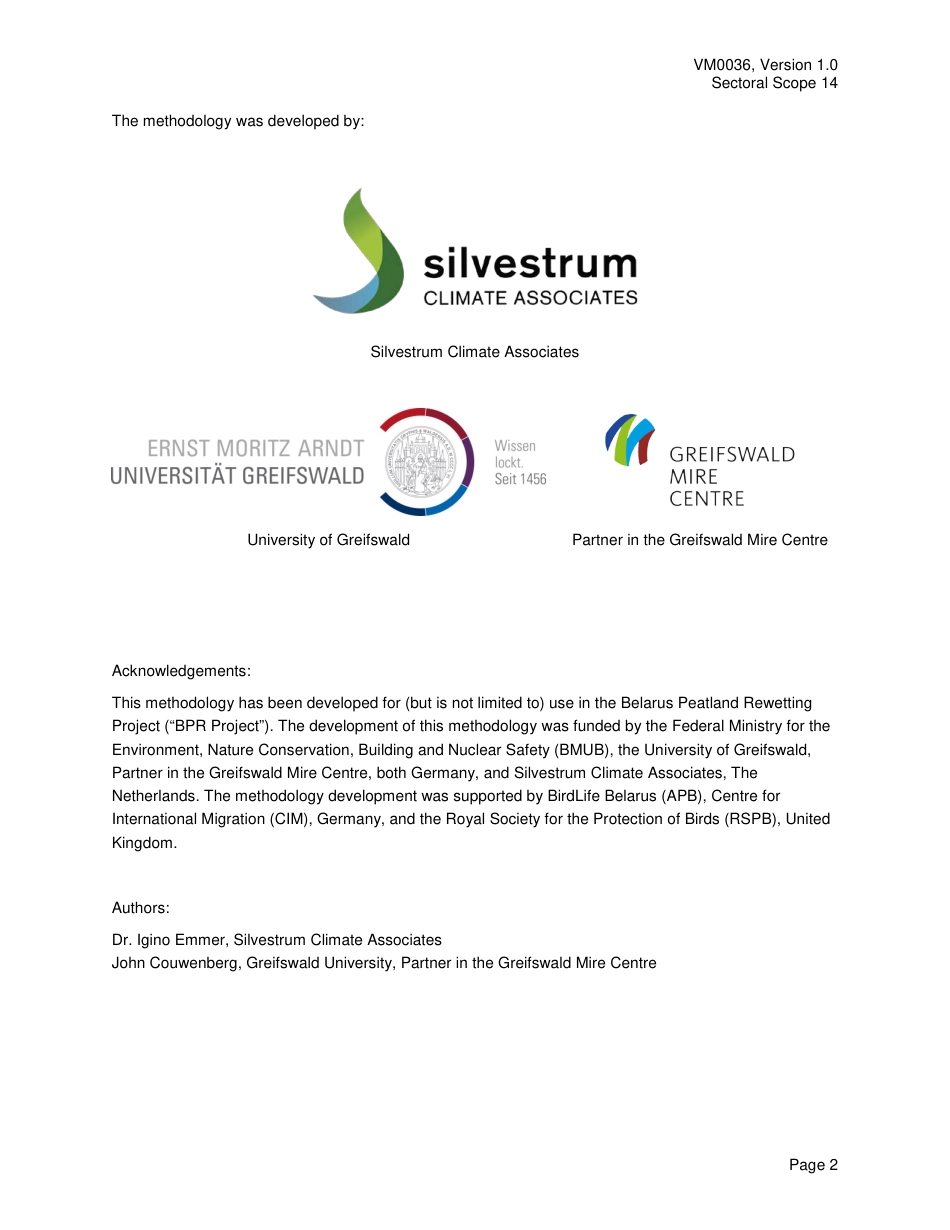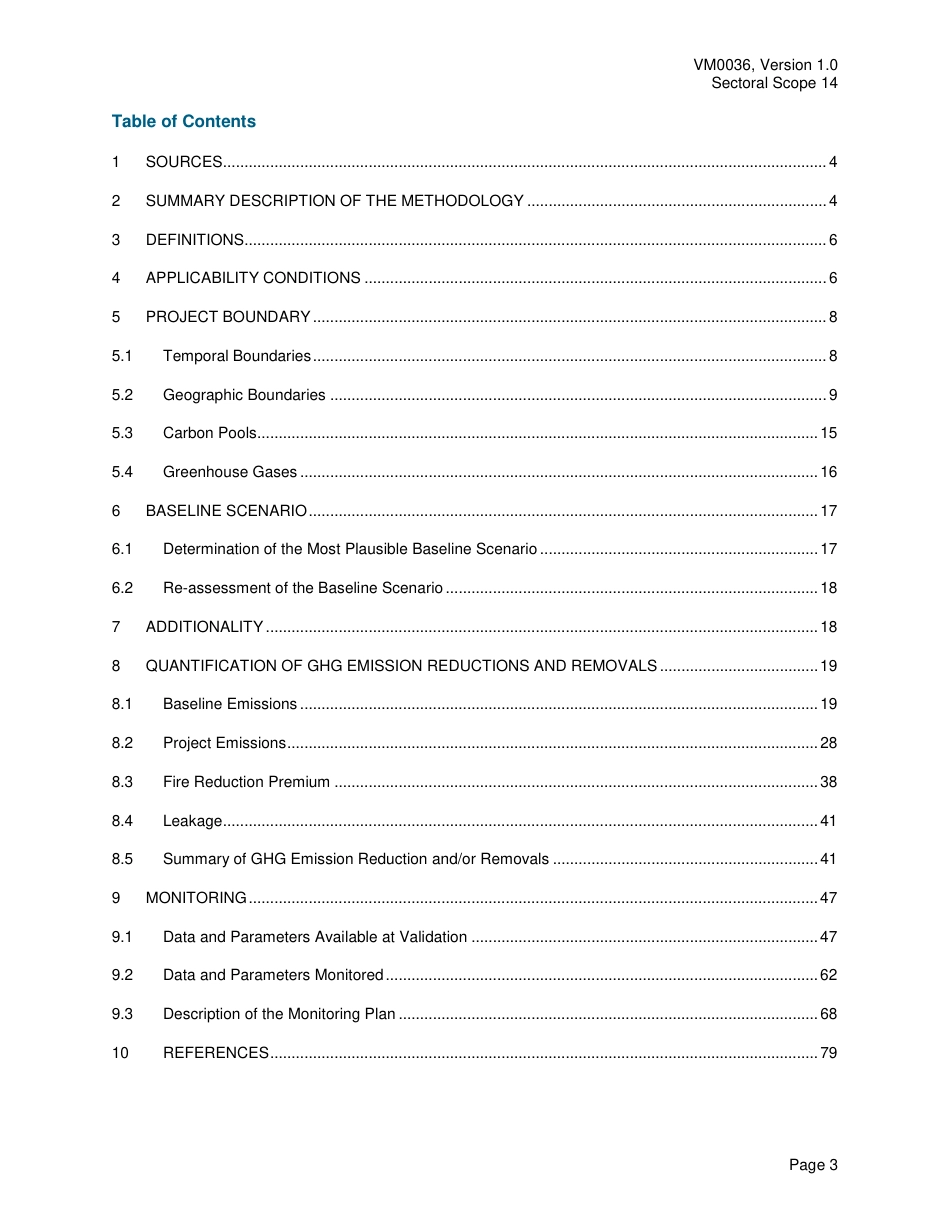VCS Methodology VM0036 Methodology for Rewetting Drained Temperate Peatlands Version 1.0 17 July 2017 Sectoral Scope 14 VM0036, Version 1.0 Sectoral Scope 14 Page 2 The methodology was developed by: Silvestrum Climate Associates University of Greifswald Partner in the Greifswald Mire Centre Acknowledgements: This methodology has been developed for (but is not limited to) use in the Belarus Peatland Rewetting Project (“BPR Project”). The development of this methodology was funded by the Federal Ministry for the Environment, Nature Conservation, Building and Nuclear Safety (BMUB), the University of Greifswald, Partner in the Greifswald Mire Centre, both Germany, and Silvestrum Climate Associates, The Netherlands. The methodology development was supported by BirdLife Belarus (APB), Centre for International Migration (CIM), Germany, and the Royal Society for the Protection of Birds (RSPB), United Kingdom. Authors: Dr. Igino Emmer, Silvestrum Climate Associates John Couwenberg, Greifswald University, Partner in the Greifswald Mire Centre VM0036, Version 1.0 Sectoral Scope 14 Page 3 Table of Contents 1 SOURCES ............................................................................................................................................. 4 2 SUMMARY DESCRIPTION OF THE METHODOLOGY ...................................................................... 4 3 DEFINITIONS........................................................................................................................................ 6 4 APPLICABILITY CONDITIONS ............................................................................................................ 6 5 PROJECT BOUNDARY ........................................................................................................................ 8 5...



